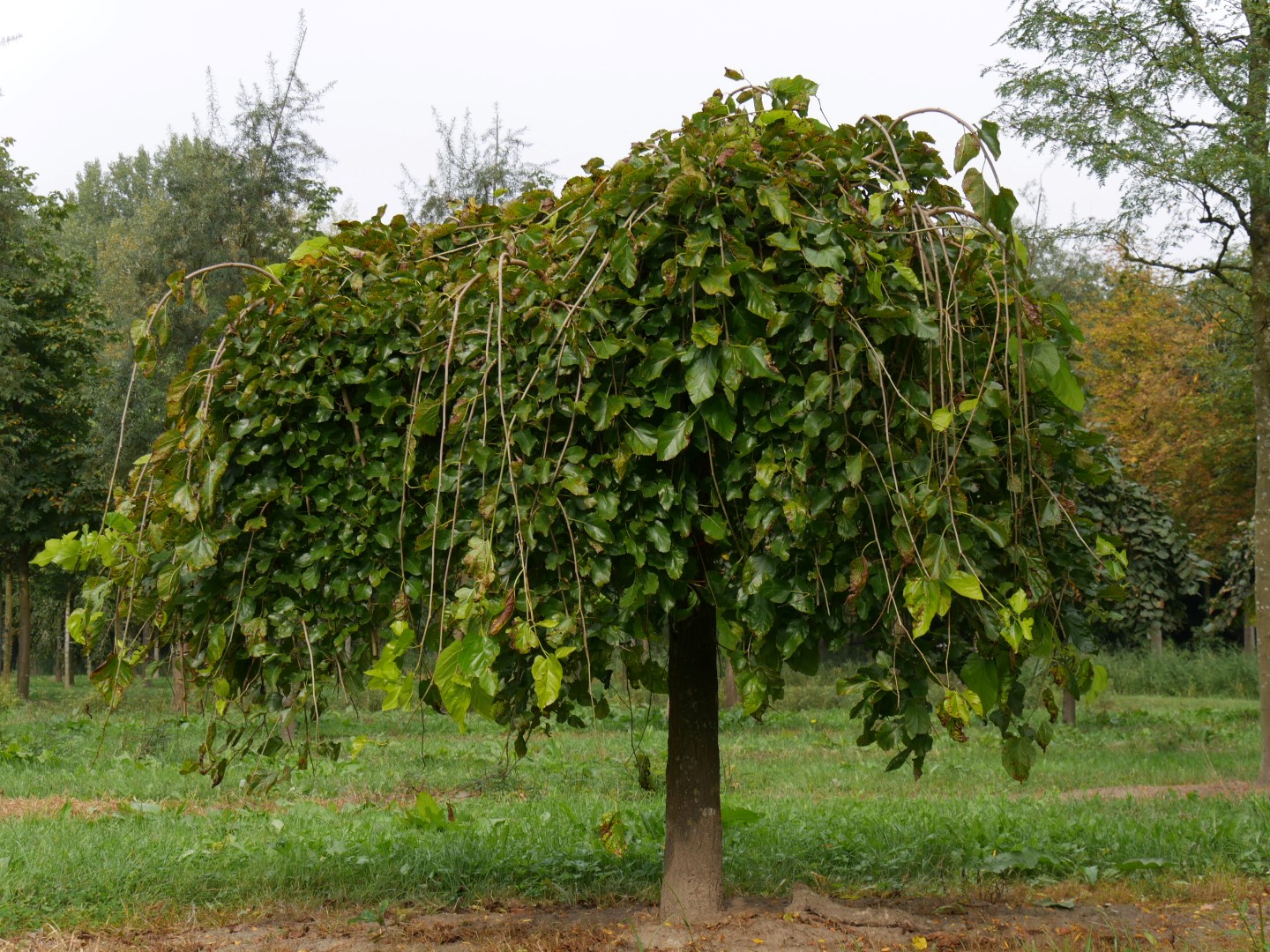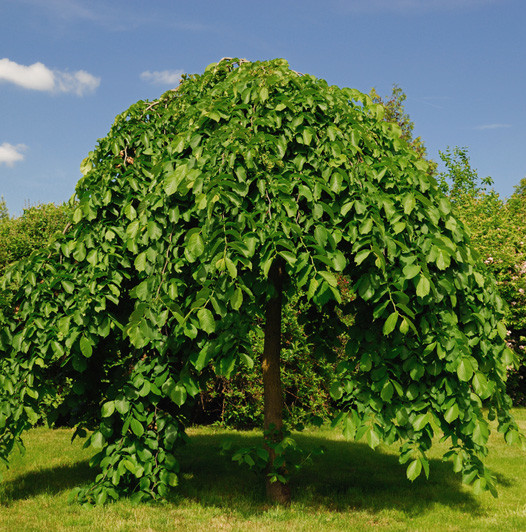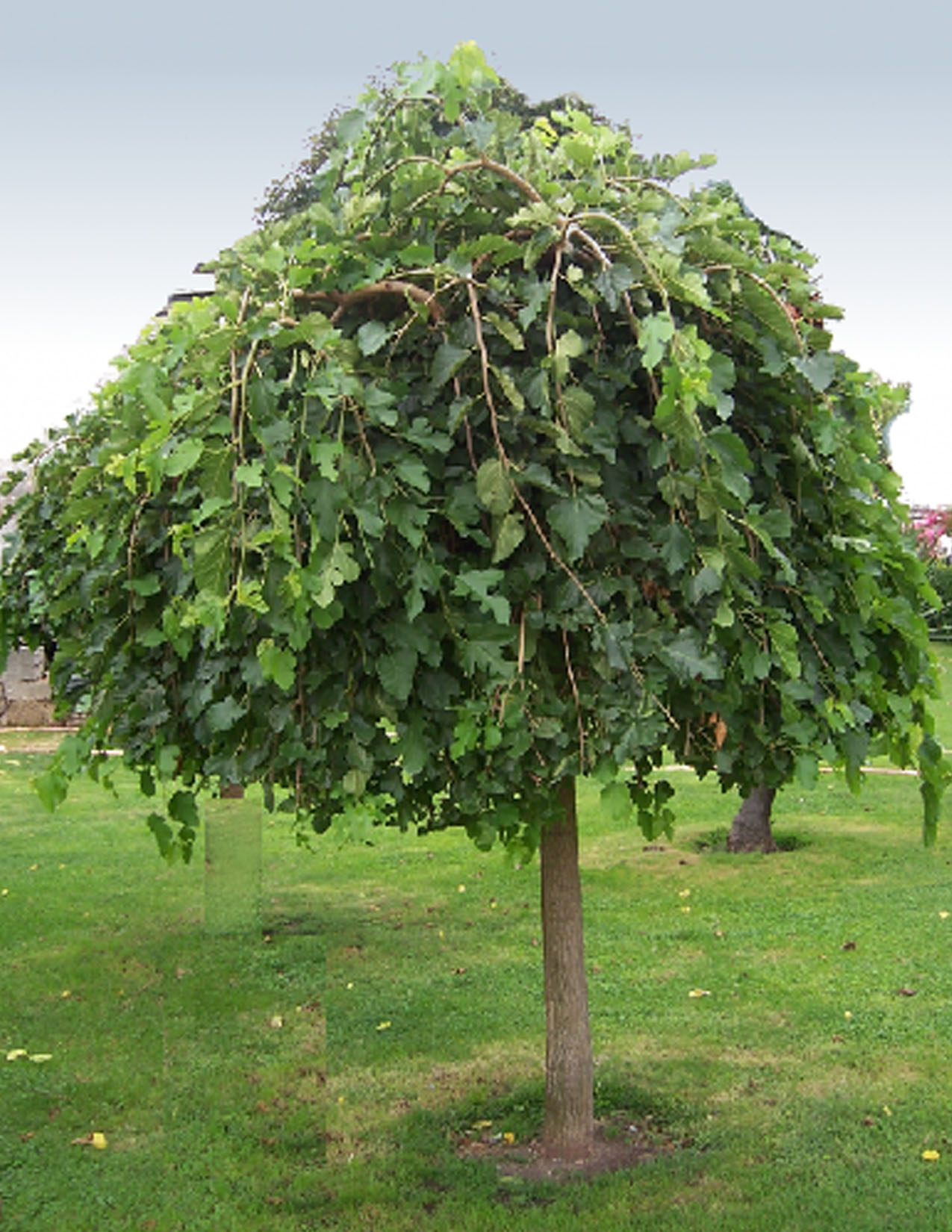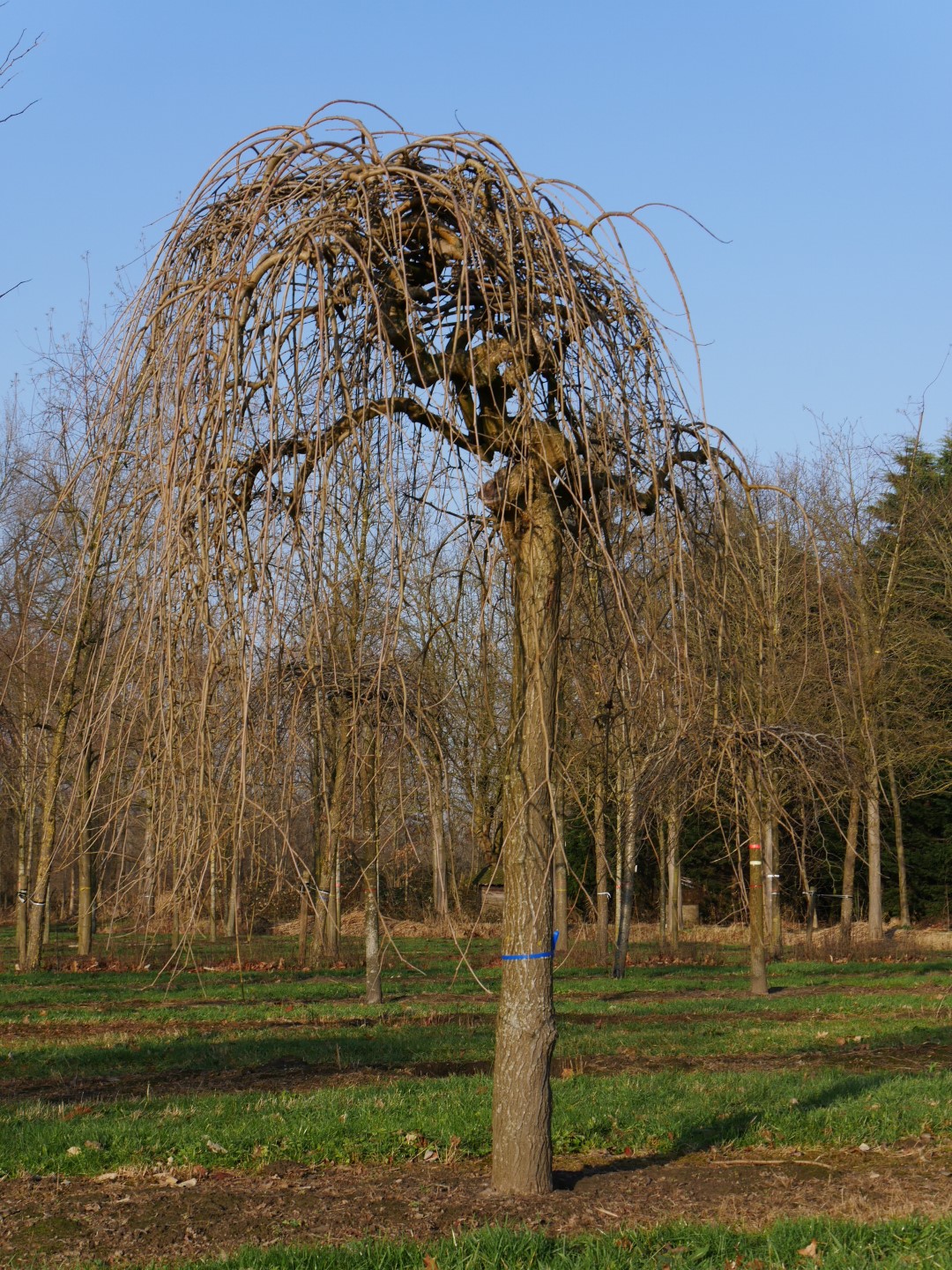
Morus Alba 'Pendula' Pépinière Cramer Inc.
Description Plants exude a milky sap from young twigs when broken. Male and female flowers form on separate plants. The fruits are relished by birds, but dropped fruit can cause maintenance issues such as staining concrete walkways, patios, and cars; be aware of where their canopy will extend when choosing the location to plant one of these trees.

Morus alba 'Pendula' White mulberry Van den Berk Nurseries
Commercially valued as the sole food source of the silkworm, the white mulberry, Morus alba, makes an attractive garden tree. It bears large lobed leaves, inconspicuous flowers and juicy dark fruits. While the fruits are edible they're said to be inferior to those of the black mulberry, Morus nigra. Grow Morus alba in moist but well-drained.

Morus Alba Pendula Viveros Verón Frutales y ornamentales
Morus alba 'Pendula' (Weeping White Mulberry) is a small, gracefully weeping deciduous tree with curtain-like, gnarled branches sometimes kissing the ground - and enclosing a fun hideout for children. They are clothed with heart-shaped, glossy dark green leaves, that may turn a pleasing yellow in fall.

El árbol que ofrece la sombra más fresca morus alba pendula. Bordas Garden Center
Perr. , known as silkworm mulberry [2] is a fast-growing, small to medium-sized tree which grows to 10-20 m (33-66 ft) tall. It is generally a short-lived tree with a lifespan comparable to that of humans, although there are some specimens known to be more than 250 years old. [3]

Morus alba 'Pendula' Deelish Garden Centre
Morus alba 'Pendula' also has yellow autumn leaves, adding to its beauty. It is self-fertile, making it an excellent choice for a fruit-bearing tree. Morus alba is deciduous and native to China. Learn more about Morus alba. Morus alba 'Pendula' originated in Italy in 1890.

Morus alba 'Pendula', Hängender Weißer Maulbeerbaum GartenBaumschule Becker
'Pendula' is a small, deciduous, weeping tree with heart-shaped leaves. Green flowers in summer are followed by edible berries in autumn which emerge white and ripen to dark pink. Morus alba 'Pendula' - Shoot

Weeping Mulberry Morus Alba Pendula in Autumn with Green and Yellow Leaves. Botanical
Description: A small weeping tree with steeply falling branches. Large, heart-shaped leaves are glossy dark green, turning yellow in autumn. The small yellowish-green flowers are followed by edible, oval, white fruits that ripen to reddish-pink. Morus Growing Tips: Grow in moist, humus-rich, fertile soils with shelter from cold, dry winds.

Morus Alba Pendula (Weeping White Mulberry) Garden Plants Online Morus alba, Plants, Morus
Height: 6.00 to 10.00 feet Spread: 8.00 to 12.00 feet Bloom Time: March to April Bloom Description: Greenish white Sun: Full sun to part shade Water: Medium Maintenance: Medium Flower: Insignificant Attracts: Birds Fruit: Showy, Edible Tolerate: Drought, Air Pollution Invasive: Where is this species invasive in the US? Garden locations Culture

Morus alba 'Pendula' treurmoerbei kopen Maréchal
Morus alba 'Pendula' A cultivar of the white mulberry grafted on a stem. It forms a small tree with branches that grow vertically downwards at first. In older specimens the branches grow out somewhat in the width. It can eventually attain a maximum width of 4 m. The final height attained depends on the height of the graft.

Hängender Maulbeerbaum Morus alba 'Pendula' Maulbeere in schöner Zierform Native Plants
-Morus alba 'Chaparral' - Fruitless Weeping Mulberry - pendulous cultivar grafted onto a 4-5' standard resulting in a distinct, umbrella-like architectural form due to its long weeping branches that give a dense canopy-Morus alba 'Pendula' - a weeping form reaching a 20' x 20'. White to purple fruit produced in summer.

Morus alba 'Pendula'Mûrier blanc pleureur Les Plantations Létourneau
Native to China, Morus alba (white mulberry) is a rounded, fast-growing, deciduous tree that typically grows to 30-50' tall and as wide. It usually develops a wide-spreading crown with age. The leaves of this tree have been used in China since at least 2600 B.C. as the primary diet for silkworms used to make silk.

Morus alba 'Pendula' Witte moerbei (treurvorm) De Tuinen van Appeltern
Morus alba, commonly called white mulberry is native to China. It is a rounded, fast-growing, deciduous tree that typically grows to 30-50' tall and as wide. It usually develops a wide-spreading crown with age. The leaves of this tree have been used in China since at least 2600 B.C. as the primary diet for silkworms used to make silk.

Morus alba 'Pendula' White mulberry Van den Berk Nurseries
Mulberry trees (botanical name Morus) are popular ornamental shade trees that produce delicious edible white, red, or black berries. Commonly called mulberries, the medium-sized, berry-producing trees have attractive heart-shaped leaves, spikes of tiny white flowers (catkins), and thick grayish-brown bark.

Morus alba 'Pendula' Hängender Maulbeerbaum Häußermann Stauden und Gehölze
A male tree, Morus alba 'Chaparral,' has shiny green leaves and attains a height of between 10-15 feet (3-4.5 m.). A female tree, M. alba 'Pendula,' bears fruit and gets to about 6-8 feet (2-2.5 m.) in height. Weeping Mulberry Fruit With regards to mulberry fruit, are weeping mulberry berries edible? Yes, indeed.

Morus alba ‘Pendula’ landscape architect's pages
Morus alba 'Pendula' A weeping mulberry with long sweeping, pendulous branches that are cloaked with large, glossy leaves. This is a tough, small, 'special effect' tree suited to park and garden plantings and used with good result in shopping malls and avenue plantings. Share on Pinterest Make an Enquiry Categories: Weeping Mulberry Weeping Trees

Morus alba ‘Pendula’ landscape architect's pages
Info Species alba (AL-ba) Info Synonym Sun Exposure Full Sun Foliage Deciduous Smooth Height 4-6 ft. (1.2-1.8 m) 6-8 ft. (1.8-2.4 m) 8-10 ft. (2.4-3 m) 10-12 ft. (3-3.6 m) Spacing 6-8 ft. (1.8-2.4 m) 8-10 ft. (2.4-3 m) Hardiness USDA Zone 4b: to -31.6 °C (-25 °F) USDA Zone 5a: to -28.8 °C (-20 °F) USDA Zone 5b: to -26.1 °C (-15 °F)